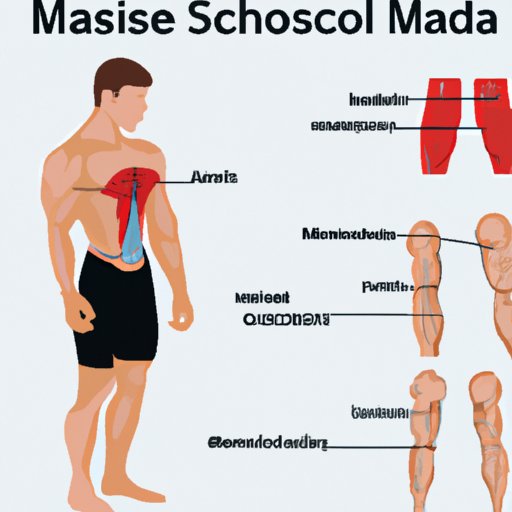Introduction
The muscular system is an intricate network of muscles, tendons, ligaments, and nerves that work together to maintain movement throughout the body. It consists of three types of muscles — skeletal, smooth, and cardiac — each of which has a specific role in body movement and function. Understanding the anatomy and physiology of the muscular system can provide insight into how it works and how to keep it healthy.
Types of Muscles
The muscular system is made up of three different types of muscles: skeletal, smooth, and cardiac. Skeletal muscles are voluntary muscles, meaning they can be consciously controlled by the brain. These muscles attach to bones and help move the body when they contract. Smooth muscles are involuntary muscles, meaning they are not consciously controlled by the brain. They are found in the walls of organs such as the stomach and intestines, and they help regulate the activity of these organs. Cardiac muscles are also involuntary muscles, and they are found in the heart. They help pump blood throughout the body.
Muscle Contractions
A muscle contraction occurs when a muscle fiber shortens or contracts. This process is caused by a release of energy from the muscle cells, which causes the fibers to shorten and pull on the attached tendons. The tendons then pull on the bones, causing them to move. The force of the contraction depends on the amount of energy released from the muscle cells, which is regulated by the nervous system.
Role of Nervous System
The nervous system plays an important role in controlling muscle activity. It sends signals through the nerves to the muscles, telling them when to contract and relax. When a signal is sent, the muscle cells release energy, causing the fibers to shorten and produce a contraction. The strength of the contraction is determined by the amount of energy released. Without the nervous system, the muscles would not be able to move or do their job.
Interactions with Other Body Systems
The muscular system interacts with several other body systems to maintain movement and bodily functions. It works closely with the skeletal system to help move the body’s joints and bones. The circulatory system helps supply oxygen and nutrients to the muscles, while the respiratory system helps remove waste products from the muscles. Together, these systems help the muscles stay healthy and functioning properly.
Nutrition and Exercise
Proper nutrition and exercise are essential for keeping the muscles healthy. Adequate amounts of protein, carbohydrates, and fats are needed to provide energy and nutrients to the muscles. Exercise helps strengthen the muscles and improve their endurance. According to a study published in the journal Medicine & Science in Sports & Exercise, regular exercise can reduce the risk of age-related muscle loss and improve overall muscle health.
Diseases, Injuries, and Aging
Certain diseases, injuries, and the natural process of aging can all have an impact on the muscular system. Diseases such as muscular dystrophy and multiple sclerosis can cause progressive muscle weakness and loss of mobility. Injuries such as strains and sprains can cause temporary or permanent damage to the muscles. And aging can cause the muscles to weaken and lose their ability to contract, leading to decreased mobility.
Conclusion
The muscular system is an intricate network of muscles, tendons, ligaments, and nerves that work together to maintain movement throughout the body. It consists of three types of muscles — skeletal, smooth, and cardiac — each with its own role in body movement and function. Muscle contractions are caused by signals from the nervous system, and the muscular system interacts with several other body systems to maintain movement and bodily functions. Proper nutrition and exercise are essential for keeping the muscles healthy, and diseases, injuries, and aging can all have an impact on the muscular system. Understanding the anatomy and physiology of the muscular system can help us better understand how it works and how to keep it healthy.
(Note: Is this article not meeting your expectations? Do you have knowledge or insights to share? Unlock new opportunities and expand your reach by joining our authors team. Click Registration to join us and share your expertise with our readers.)
